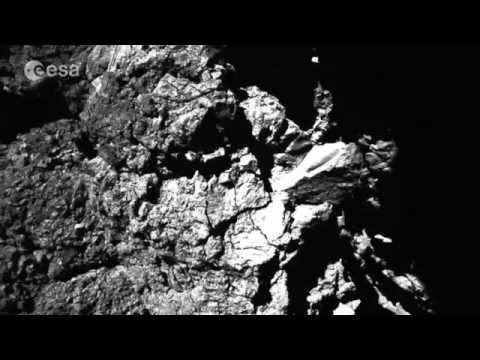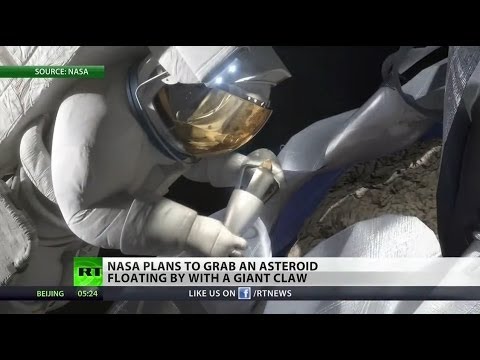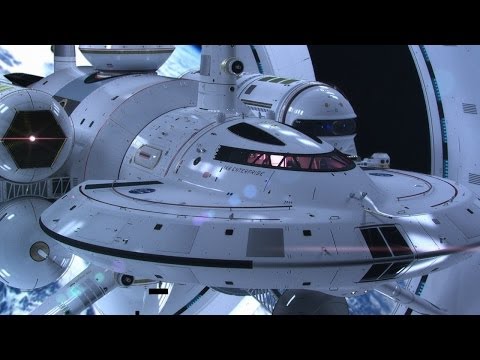How Will We Know if NASA’s DART Mission Successfully Changed an Asteroid’s Orbit?
This is Lowell Observatory. Lowell is one of many observatories around the world that will be observing the DART impact, NASA’s first ever planetary defense test mission to see how much a spacecraft impact can deflect an asteroid in its orbit. This is where Pluto was discovered. And we are still doing research in all areas of astronomy today. So let’s go check it out. This is the Pluto Telescope, the telescope that was used to discover Pluto almost a hundred years ago. So here we are at the Clark Telescope. This is where Percival Lowell sat to observe Mars. Let’s head on over to the Lowell Discovery Telescope about an hour south of Flagstaff, which is where we are going to be collecting data for the DART mission. And the reason we’re all the way out here in the middle of this forest is that we have really dark skies here. And this is the Lowell Discovery Telescope. This is what a 4.3 meter telescope looks like. This is what we will be using to study Didymos and Dimorphos in the days and weeks after DART impact. The DART spacecraft will be hitting an asteroid called Dimorphos. It’s special because it’s a binary asteroid, which means a satellite around a larger asteroid called Didymos. And DART will actually be hitting Dimorphos. And what we will be measuring is how much DART changes the orbit of Dimorphos around Didymos. So this is an important test for planetary defense mitigation strategies in case we ever have to do this for real. The Lowell Discovery Telescope is one of many telescopes around the world which will be used to study Didymos and Dimorphos. It’s really a global, coordinated effort. And what we’re looking at here is a large 4.3 meter primary mirror that’s in the middle of the telescope tube here. Up at the top is a secondary mirror. The secondary mirror up top there is what is focusing the light down onto the instruments and allows us to take images with the camera that’s located down at the bottom. This is maybe one of my favorite hidden rooms at the telescope. We’re like standing inside the telescope, underneath the telescope. There’s a hundred tons above your head held up by this and this, which is cool. It’s sort of, as you can see, the highest peak around here, just over 8,000 feet. I come up here for sunset because you know, the sun setting right there. It’s just, it’s perfect. For DART, we’re going to be collecting images of the night sky. And typically, an observer would be here in front of one of these consoles controlling the instrument and taking images like these as they’re coming in off the telescope. DART is really a sort of before-and-after experiment. We need to understand the system before the spacecraft intentionally impacts. And then we have to understand what the outcome of that impact event is. As we watch from the Earth, Dimorphos will pass in front of Didymos and behind Didymos. What we will be doing with those images is measuring the brightness of Didymos in those images and looking at how that brightness changes and those dips in brightness allow us to measure when these eclipse happen and measure the orbit period of Dimorphos. And so you have essentially a fixed star field here. All the white dots are stars of different brightness and moving through this field is Didymos and Dimorphos, which, again, we can’t distinguish them as discrete points of light, but we have that small object moving through the field of view. So after impact, we will then be able to go back and start observing intensely, looking for those mutual events, those eclipse events of Dimorphos passing in front of and behind Didymos. And on each one of these frames, we’re measuring the brightness to assess whether or not it’s undergoing one of these events where Dimorphos is passing in front of or behind. And using those to determine the orbit period of Dimorphos around Didymos. This is such a cool experiment and it’s such a singular experiment. Using the ground-based telescopes like this one and others around the world to watch the system and see how it’s affected by this impact event, because that’s really what’s going to give us the answer to what did DART do at the time of impact? And that will be exciting to see how that evolves over the days and weeks following that impact. NASA. A NASA 360 Production.













